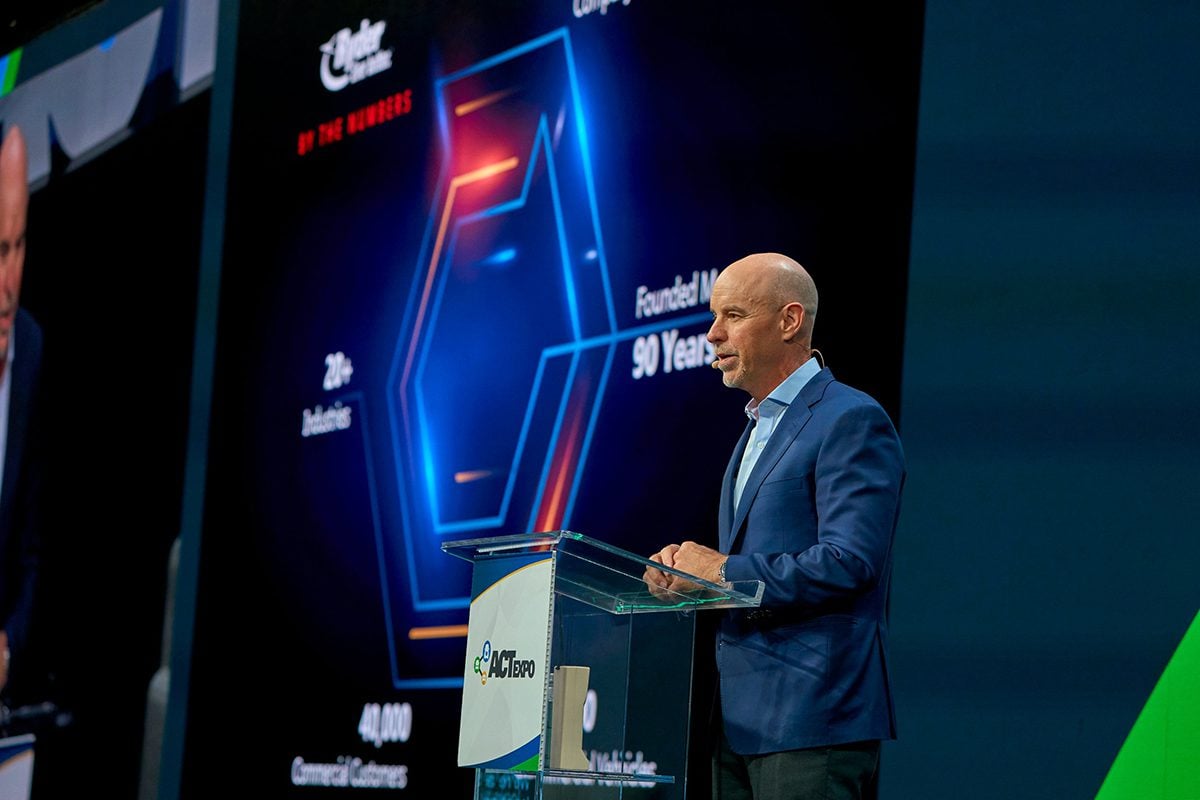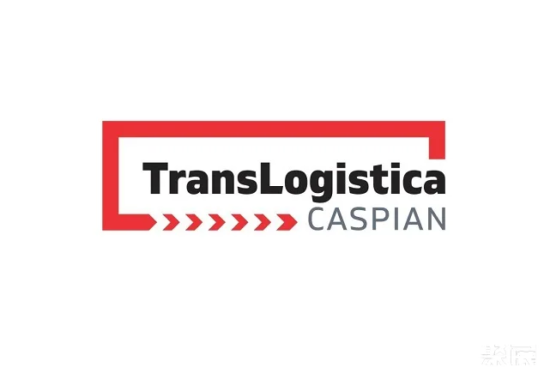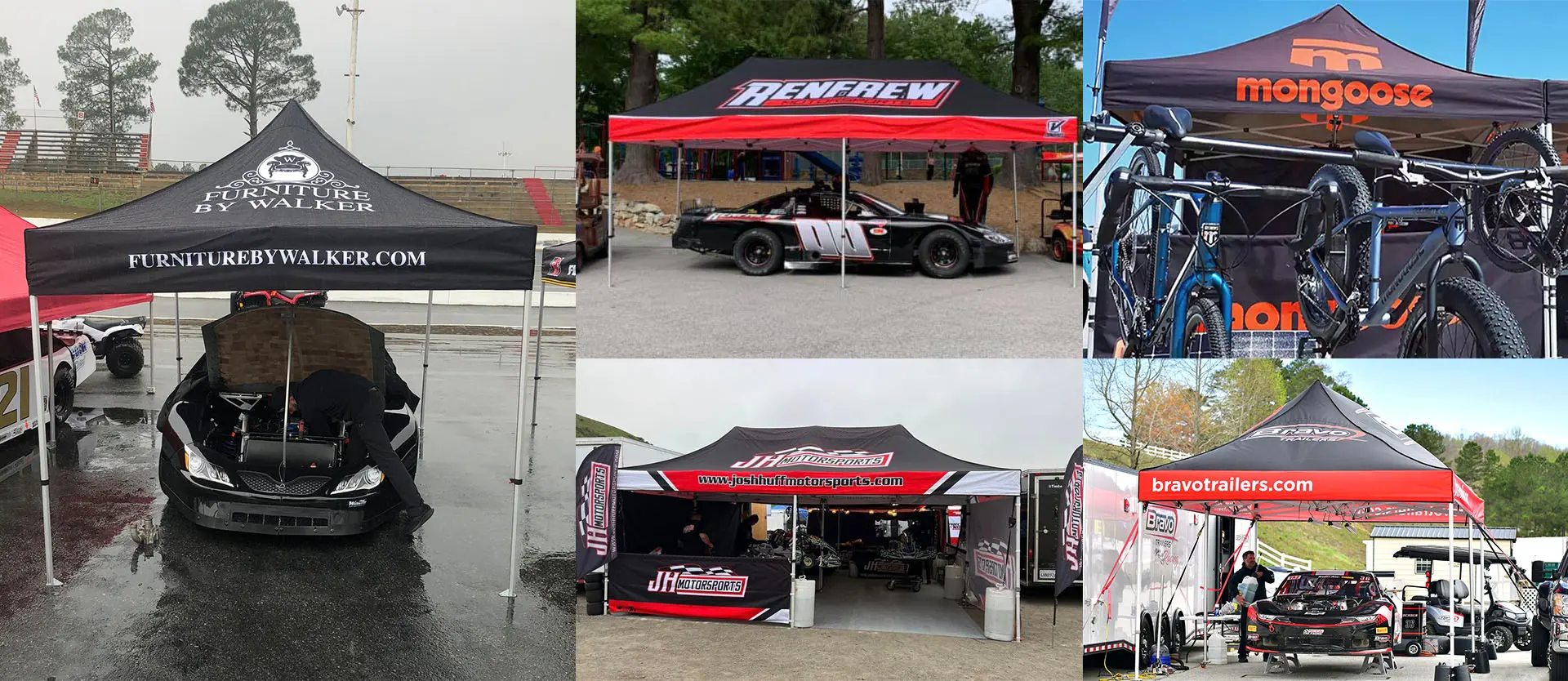
May 23, 2024
For Ryder System CEO Robert Sanchez to double down on electric vehicles, there needs to be a catalyst that makes the technology more economical and operational in the commercial trucking industry. During his keynote at this year’s ACT Expo in Las Vegas, Sanchez was outspoken about how he sees electric trucks fitting into his fleet.
“From our perspective, for commercial electric vehicles to work in the real world, we need breakthroughs in battery technology and expanded charging infrastructure. We need an inflection point, a credible technological breakthrough that drives mass adoption of new technologies,” Sanchez said, citing the evolution of the cell phone industry since 1984 and the launch of the Motorola DynaTAC 8000X as an example. “It weighed two and a half pounds, provided 30 minutes of talk time on a single charge, and took 10 hours to fully charge. The price of this breakthrough was $12,000 in today’s currency.”
Fast forward to today, technology has not only advanced exponentially, but it has also changed the way the world works.
“Just like cell phones, we need to reduce the cost of electric vehicles. We need smaller, lighter, more powerful battery technology to increase range and capacity. Just like cellular networks, we need nationwide infrastructure. And we need the fastest applicable charging methods that allow professional drivers to conveniently charge their trucks while getting a bite to eat and rest,” said Sanchez.
To better understand the costs involved in transitioning to electric vehicles, Ryder conducted a quantitative analysis of traditional diesel engines and electric vehicle technology. To determine the Total Cost of Transport (TCT), the Ryder team studied the costs of diesel versus electric vehicles in light, medium and heavy commercial vehicles. Based on representative loads from its dedicated transportation business, the analysis showed that the cost of converting to electric vehicle technology is significantly higher in today’s market.
“We expected the costs to increase, but we were surprised by the magnitude of the increase,” Sanchez added.
To determine the total cost of electrifying its fleet, Ryder calculated the cost of vehicles, fuel (diesel or electric), driver wages, and other factors to transport the same load, the same distance, and achieve equivalent delivery times.
After analyzing data for a number of clients, Sanchez and his team began to realize that in many cases the business case for switching to electric vehicles didn’t yet exist.
“If you convert the average load of a heavy diesel tractor today to an electric tractor, you would need nearly two vehicles and two more drivers to move the same load as one diesel truck, which is more than double the TCT,” Sanchez said. “I think most of you would agree that’s hard to swallow.”
The team then compared diesel and electric light vans, medium-duty trucks, and heavy-duty trucks, and assumed costs in California and Georgia. Because many of their customers own multiple vehicles but fewer than 50, they applied a single cost to a mixed fleet of 25 vehicles.
Likewise, they add together the cost of the vehicle, maintenance costs, fuel/electricity costs, necessary charging infrastructure costs, driver salaries, and general and administrative expenses. The final part of the equation is range and payload capacity.
Starting with the van segment, the results show that costs in California and Georgia would only increase by 3% and 5%, respectively, due to lower maintenance costs and reduced fuel costs when running on electricity instead of diesel. But this is only a one-to-one comparison, according to Ryder’s report, as adding mixed fleets together greatly increases the cost difference. Ultimately, a mixed fleet of 25 vehicles in California would increase by 56% overall, while the Georgia fleet would increase by 67%.
“If you extrapolate the mixed fleet analysis to the entire U.S. commercial fleet transitioning 100% to EVs and assume businesses pass on the increased total transportation costs to consumers. We estimate that these increased costs would cumulatively add 0.5% to 1% to overall inflation,” Sanchez explained.
His next topic was charging infrastructure, considering the total cost of installation and the cost to the grid of increasing the available electricity to charge these vehicles.
“The Clean Fleet Coalition estimates that preparing today’s fleets for electrification will require investments of nearly $1 trillion in charging infrastructure and grid improvements,” said Sanchez. “By 2035, as more commercial EVs hit the road, the projected power demand for large truck stops could reach 20 megawatts, equivalent to the power needs of a small U.S. town, and by 2045, the projected power demand for large trucks could reach 40 megawatts, approaching the power needs of a large industrial plant.”
Overall, Sanchez explained that the purpose of the report, titled Charging Logistics: Electric Vehicle Switching Costs, is to highlight the current cost gap between diesel and electric vehicles and help identify cost drivers so that OEMs, solution providers and regulators can focus their development efforts to achieve zero-emission targets.
“We believe these technologies will drive the development of battery technology to address payload and range limitations, reduce vehicle costs, and build adequate charging networks and associated grids,” concluded Sanchez. “Based on our experience at Ryder, when new technologies are ready for the market, people and businesses see the benefits, and mass adoption follows. It will take all of us here and across the industry working together to strike a balance between encouraging innovation and safeguarding the interests of businesses, consumers, and the environment. I believe this is the key to a successful transition to a zero-emission future.”











Leave a Reply Cancel reply
You must be logged in to post a comment.